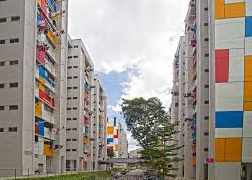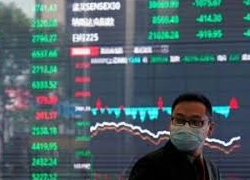As opportunities arise globally, we must not ignore the basic needs of those less fortunate than ourselves.
The world is opening up in unexpected ways. For instance, a former colleague recently discovered the joys of driving a Mahindra Automotive jeep, a testament to India’s growing manufacturing capabilities that parallel China’s advancements in technology.
Africa, too, is not just a reservoir of natural resources; it is becoming a vibrant hub for music and culture. We can’t ignore the hungry people striving to access what we often take for granted. Remaining confined to our parents’ outdated worldviews would be a grave mistake.
I recently began watching “Young, Famous and African” on Netflix. This reality show features wealthy, young, and famous Africans and is primarily filmed in Johannesburg, South Africa. Its diverse cast includes individuals from Nigeria and Tanzania, positioning it as Africa’s answer to “Bling Empire.”
This show serves as an eye-opener, highlighting the opportunities emerging in a world reshaped by nationalism and the aftermath of COVID-19. Conversations with people in Singapore and beyond often reveal a limited view of Africa, reduced to stereotypes of poverty and dictatorship supported by foreign powers.
While many regions in Africa continue to struggle, others are experiencing significant growth. The middle class in Sub-Saharan Africa may still be developing, but a consumer market is indeed flourishing. Wealth is being generated outside the stereotypical narrative of resource extraction, with many participants in this show earning money from films and music.
Witnessing a prosperous Africa reminds us that the world is evolving. Singapore and other Asian Tigers—such as Hong Kong, Taiwan, and South Korea—gained wealth through low-cost manufacturing aimed at Western and Japanese markets. Initially, wealth accumulation occurred in one part of the world, while others served as contractors. Early Asian development focused primarily on producing inexpensive goods.
However, this paradigm has shifted dramatically. China and India have disrupted traditional development models. China, once a minor player in the global economy with a GDP of USD 178 billion, has skyrocketed to USD 14.72 trillion, now ranking as the second-largest economy after the USA. Discussions are now less about if and more about when China will surpass the United States.
This new economic landscape has introduced multiple growth engines, leading to social changes as well. For instance, French cognac producers no longer object to consumers mixing their product with soft drinks, as the largest market for cognac has shifted to Asia, particularly China.
Additionally, the notion of innovation, once thought to be a Western domain, is changing. Economic growth in developing nations is no longer solely driven by importing Western products; homegrown innovation is on the rise. China is transitioning away from low-end manufacturing, nurturing high-tech companies like Tencent and Alibaba, while India’s mid-tier firms are evolving into product creators rather than just cost-effective service providers.
It’s crucial to recognize that while developing countries are making strides, significant poverty still exists. Although China and India have burgeoning middle classes, vast populations remain impoverished. This reality serves as a reminder that even with economic growth, the average American will likely remain more prosperous than the average Chinese citizen, given China’s population size.
Migration from developing nations will persist, underscoring the complexities of global interactions. The American-Born Chinese (ABCs) often identify as Americans of Chinese descent rather than Chinese nationals with American passports.
Engaging with individuals from less developed regions may present challenges, but the evolving landscape indicates that opportunities are emerging across various industries in the developing world. We must recognize these developments and work toward addressing the fundamental needs of those who continue to struggle.








